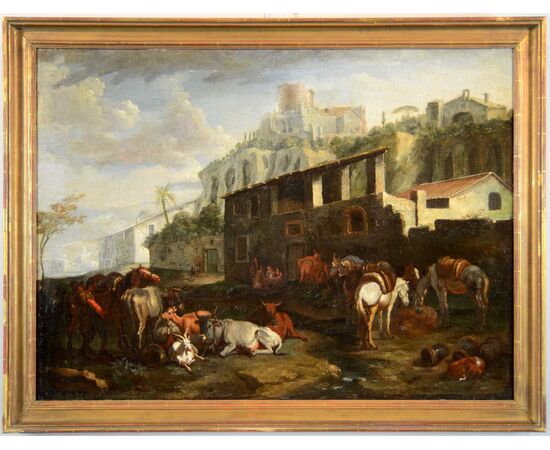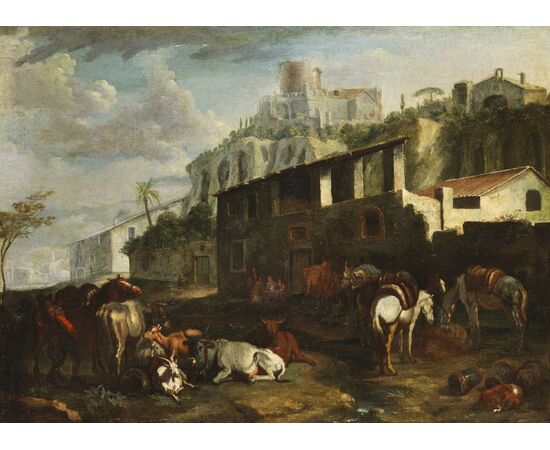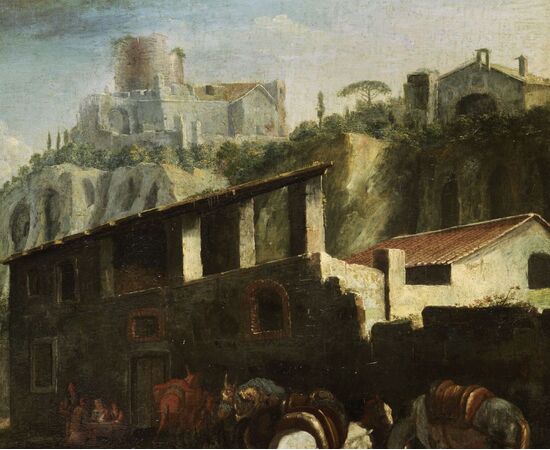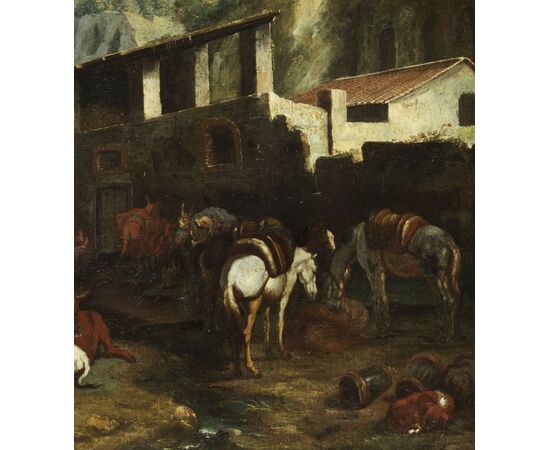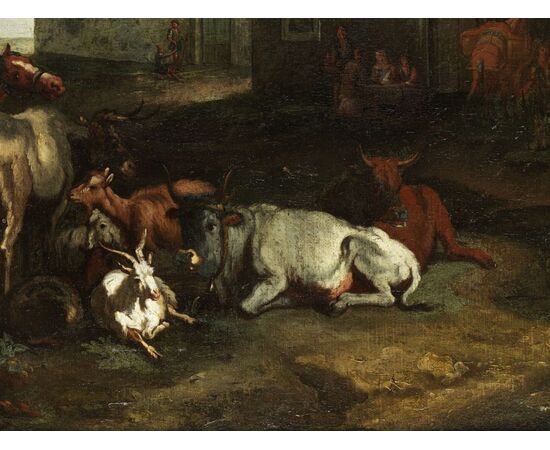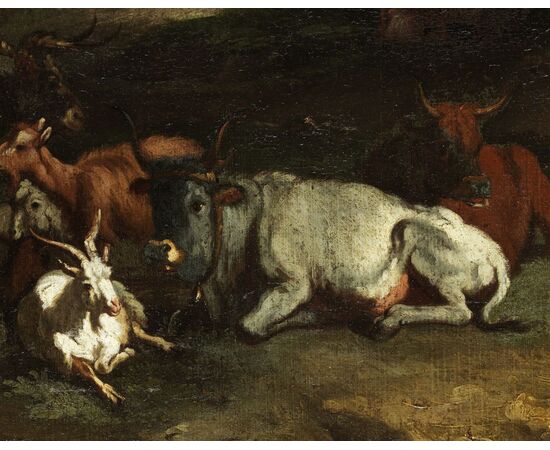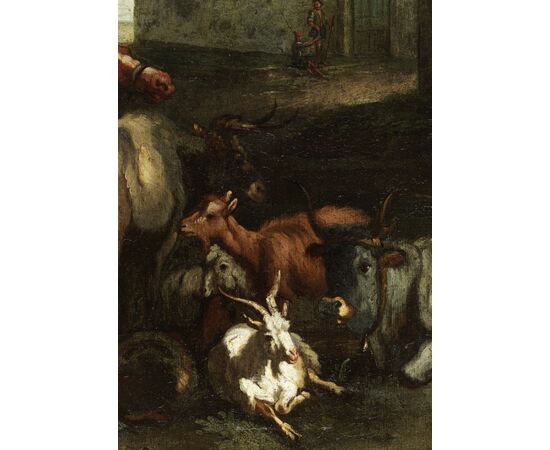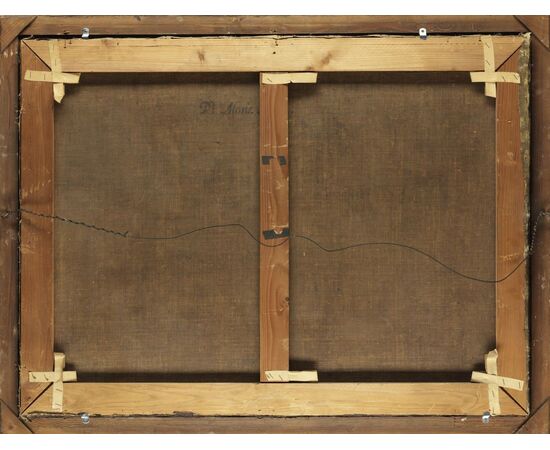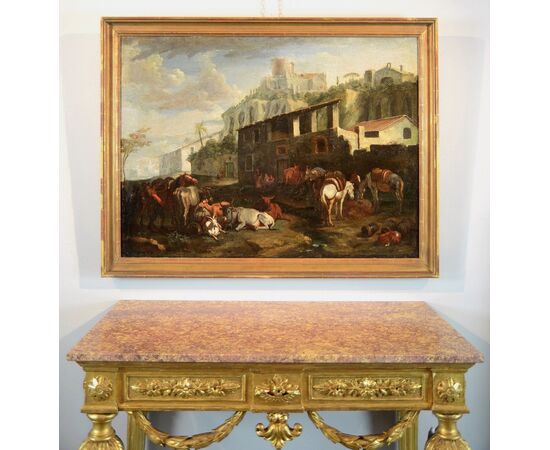View of Rome near the Palatine Hill, Pieter van Bloemen (Antwerp 1674-1720)
Painting depicting "View of Rome with a rural scene near ancient ruins, with the Palatine Hill from Via dei Cerchi," a high-quality work by PIETER VAN BLOEMEN, known as "LO STENDARDO" (Antwerp, 1657-1720).
Circa 1690
oil on canvas, 76 x 104 cm, with frame 86 x 112 cm
Private Collection, Rome
Full details on: www.antichitacastelbarco.it
A representative and typical testament to Pieter van Bloemen (Antwerp 1657 - 1720), particularly his stay in Rome, this evocative "Rural Scene with Views of Rome" exposes us to a subject congenial to him, which we find other times in his catalogue, with similar but varied inventions from the present ones. It was during his Roman years, from 1687 to 1692, that he reached the peak of his career, obtaining flattering successes, thanks also to the settings with Roman ruins in the background, as confirmed by the presence of various works of his in the main picture galleries of the Roman aristocracy.
Acting as a pendant to the present work is another painting by Van Bloemen, of the same size and similar subject, as well as the same stylistic and compositional characteristics.
This splendid canvas, which is therefore an interesting addition to the catalogue of the Flemish master's works, depicts horses and livestock at rest against a backdrop of houses and ancient ruins, in which one can recognize a view of Rome with the Palatine Hill from Via dei Cerchi.
From the foreground, with animals studied and depicted from various angles and a single male figure on the left, the representation develops diagonally with the buildings on the right, where other figures appear: a man with his horse, some patrons sitting at the outdoor table of an inn to whom the innkeeper is bringing drinks.
Pieter is clearly linked to the Flemish idiom, while revealing himself to be Italianizing in the type of landscape and in the stylistic conduct. While his brother Jan Frans will specialize in pure landscape, of classical inspiration, Pieter combines it in a bambocciante key, preferring rural settings with ancient ruins that form the backdrop to simple daily activities: horses drinking, blacksmiths at work, travelers resting at inns, markets.
The interest in animals emerges from the constant presence, in addition to horses, of goats, oxen, crouching dogs, which in fact also here become protagonists occupying the strip of the foreground, according to a compositional scheme rather common in Van Bloemen.
In the vast activity of lo Stendardo, which still awaits cataloguing, one can still cite some paintings that for the inventions and in particular for their Roman settings, present notable affinities with the pair examined here. For this purpose, one can cite the "Via dei Cerchi" from a private collection, the "Rural Scene" formerly Rospigliosi, the "Horses at the Watering Hole" from a private collection, the "Roman Scene with Various Animals" formerly Apolloni collection, and the "Campo Vaccino" of the Lille museum, and others, all published in the volume Andrea Busiri Vivi. Scritti d’Arte (U. Bozzi Editore 1990, pp. 71-90).
[GIANCARLO SESTIERI]
For any information, please contact us.

